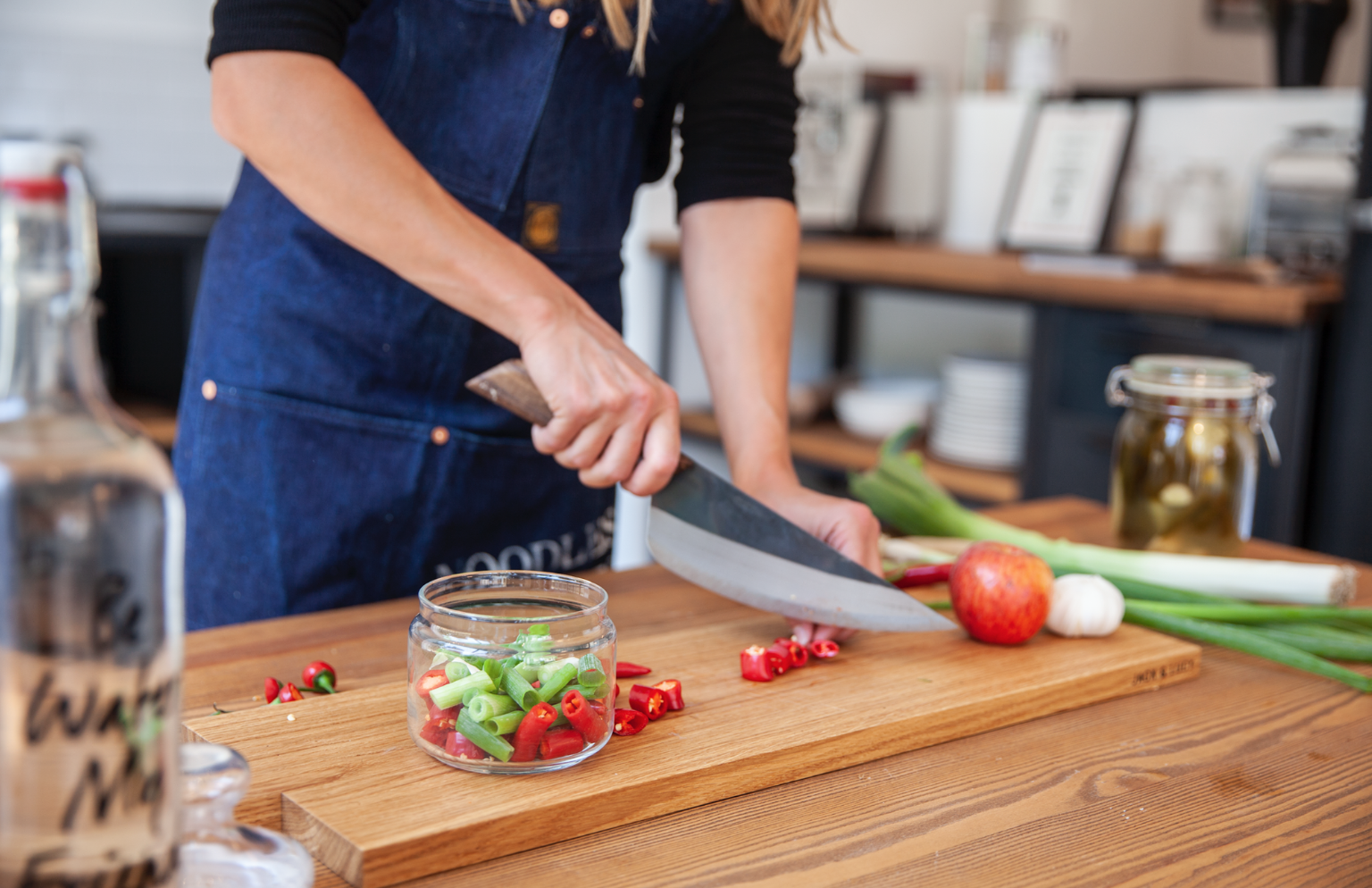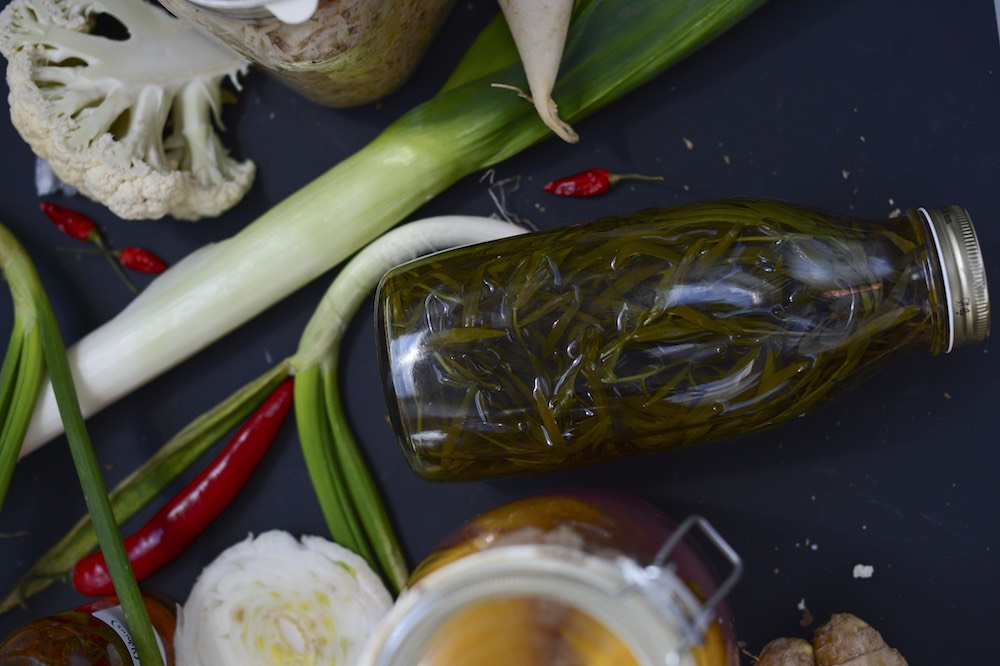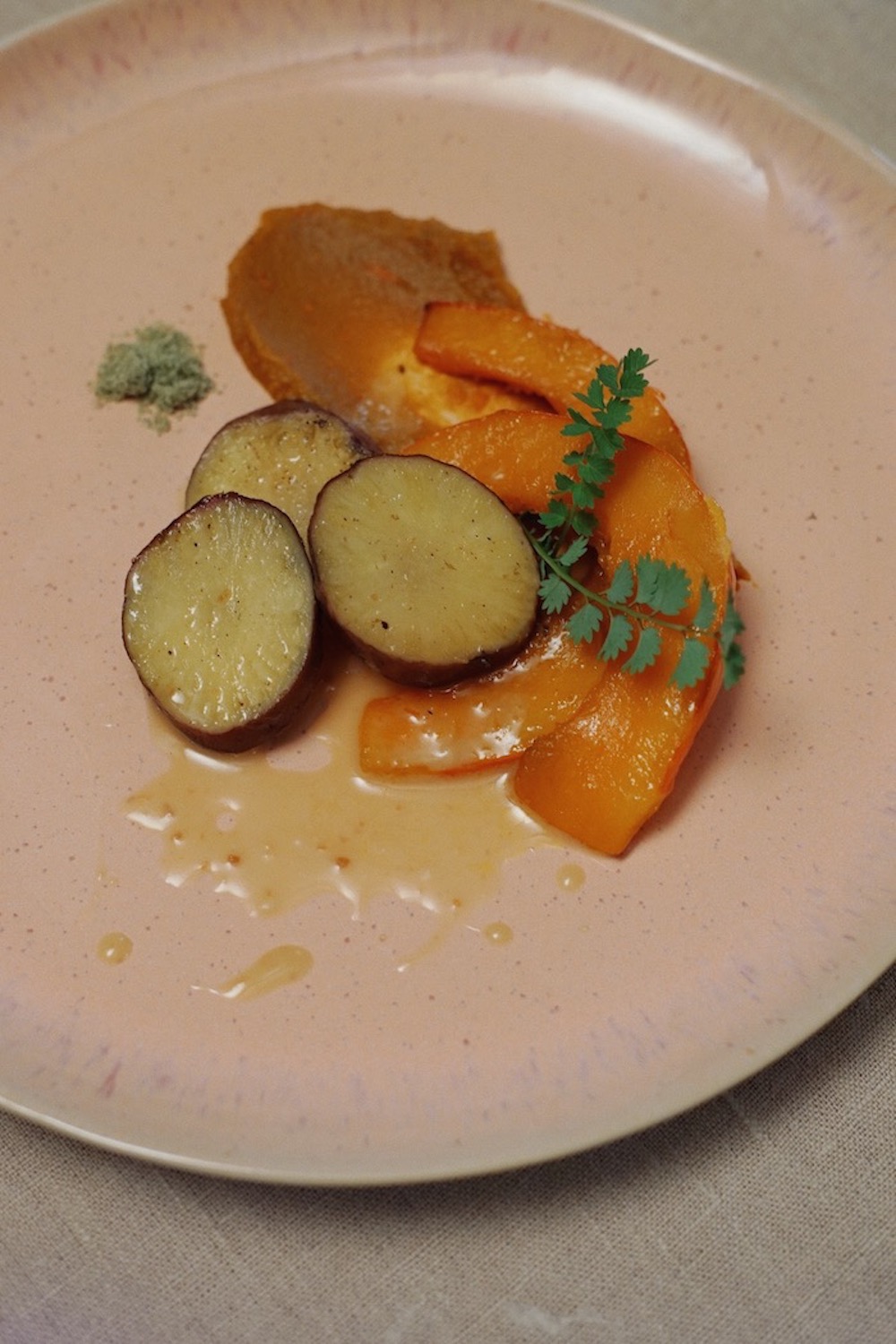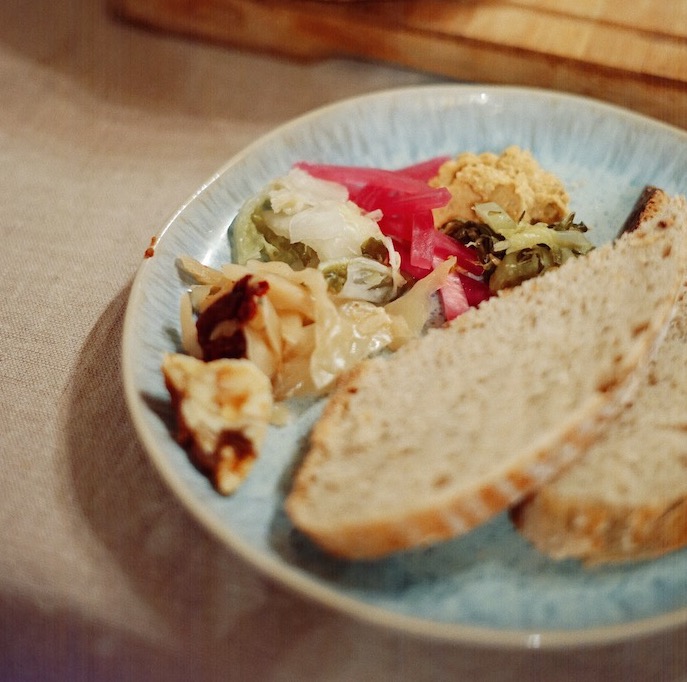The key to a healthy lifestyle lies in striking a balance on the plate and promoting diversity on the palate. And this not only holds true for the types of foods we select but also the ways in which we prepare them. To maximize our nutrient uptake and help our digestive system do its job (and do it well), it is imperative that we approach our diets three-dimensionally.
Raw foods, cooked foods and fermented foods make up the three dimensions of culinary composition. Individually speaking, none of the three is ‘better’ or ‘healthier’ than the other; it is the combination of all three that creates a perfectly-balanced whole.
The 1st Dimension – Raw Foods
Since the dawn of time, Mother Nature has served us foods in their raw form—fresh from the soil, jam-packed with rich flavours and dense nutrients. In fact, this arguably ‘purist’ form of consuming foods is so simple and wonderful that there is an entire movement, the Raw Food Diet, dedicated to it. In the culinary world, foods are generally classified as ‘raw’ as long as they have been processed below 42°C. This means that sun-dried foods, such as tomatoes or fruits, are also members of the raw food category.
As edible alchemists, the trouble is that while many foods can and should be consumed in their raw form, many must be broiled, boiled, steamed, roasted, fried or fermented for us to digest them. Did you, for example, know that raw potatoes and fungi are actually poisonous to humans? Or that most species of cabbage will cause flatulence if eaten straight off the field?
Unlike cows, we do not have four stomachs, so we do need to go the extra mile to ensure that everything we put into our systems can actually be properly processed before it comes back out the other end.

Then there is the issue of modern-day agriculture. Have you ever wondered why vegetables from your local organic farmer, market garden or balcony look and taste so much better than their conventional supermarket counterparts? A lot of the fresh produce we find in supermarkets are harvested before they are ripe to enable long-distance travel. This, in turn, results in unnecessary loss of flavours and nutrients. Why eat an unripe mango in December when you can chomp on sun-dried apples, raisins and pears?
Last but certainly not least, raw foods spoil faster than their fermented counterparts because Mother Nature designed them to decompose. This is not a problem, of course, if you have a composter at home. But it does become disturbing when we look at the average amount of food that goes to waste in Western households (the European Commission estimates that about 20% of food produced in the EU is lost or wasted). Processing raw foods further is a way of extending their lifespans on our countertops and diverting them from landfills.

The 2nd Dimension – Cooked Foods
Steamed, baked, boiled, blanched, simmered, sauteed, fried—we use a number of different methods to process raw foods. While this is all fine and dandy, problems arise when we look at the vast scale of industrial processes, such as pasteurization or homogenization, which do a solid job at extending foods’ lifespan but also eliminate the good bacteria in the process. Thus, a lot of foods that were originally fermented, such as sauerkraut or kombucha, are now industrially processed. As a result, many of those which were once teeming with healthy bacteria for our guts are now dead. This may not be unhealthy for our bodies, but it’s certainly not nutritious.
I mean, when life gives you lemons, why make flat, empty lemonade when you can have fizzy vitamin-rich sodas?

Ayurvedic practitioners claim that cooked foods are generally ‘better’ for humans than raw foods. Why? Because warm temperatures break down foods on a cellular level while also stimulating the blood flow in the human gut. This, in turn, improves overall digestibility and allows for higher nutrient uptake.
I don’t know about you but that sounds pretty scientific to me!
Indeed, the concept that cooking improves bioavailability and kills off bad bacteria/toxins is widely accepted in most nutritional/food science circles. We were recently reminded of this when we picked up a pamphlet published by the Fraunhofer Institute on the advantages fire presents for microbiome: this nifty piece of research was pointing out that by utilizing less energy for digestion, humans’ bodies were able to guide more energy towards the evolution and development of the brain. Similarly, in anthropological circles, the discovery of the controlled uses of fire by Homo erectus and thus resulting in the birth of cooking is considered a milestone in human culture.

The 3rd Dimension – Fermented Foods
Historically, fermented foods have been on level ground with the other two dimensions. And most nutritionists would agree that this is still what we should aspire to achieve. In fact, fermented foods were only pushed out of most Westerners’ diets in the 20th century; for leconomic(al) reasons in agro-industrial food production or—from the consumer point-of-view—for lifestyle reasons. Buying “fresh” foods from all around the world all-year-round is sadly a mark of status.
Fermentation food writer Sandor Katz pointed out that the term ‘fermentation’ is derived from the Latin word fervere, which means to boil. But also to foam or teem. Indeed the action that takes place the mason jar does bear an uncanny resemblance to boiling. Just without the high temperatures. Bubbly and lively by nature, fermented foods are the third dimension in culinary composition.
We must emphasize at this point that some foods, such as good-ol’ German sauerkraut or sourdough bread, are both fermented and cooked. So, of course, the lines between the dimensions can be blurred. “The more the merrier,” we like to say.
Below, we delve a little bit deeper into the innumerable benefits of fermentation as it is by far still the most underrepresented—or in some cases even neglected—dimension in modern cuisines.

Diversity
Fermentation allows us to extend the four seasons far beyond an individual fruit or vegetable’s ripeness in its raw or cooked form. As a result, we are empowered to maximize diversity in our diets throughout the entire year without having to rely on imported produce to get our vitamin fix.
Meal Preparation
Meal preparation becomes easier when you incorporate fermented foods into your diet because not everything on your plate has to be chopped or cooked. The beauty of fruit vinegars, pickled vegetables & co. is that they are always within arm’s reach. All you have to do to add a burst of flavour or dollop of nutrients to your dish is open the jar, spoon out a portion and plate it. Bon appétit!
The act of preparing ferments can be done in large volumes, giving way to a unique social component. We find our ferments are best-enjoyed when prepared in the company of loved ones. Whether you’re massaging cabbage to your favourite tunes with your partner, taking turns kneading the sourdough with your sister, or chopping chillies with your compadres, there’s always fun to be had when food needs to be prepared. Think: the antidote to your classic 50s’ Tupperware party; think: Kimchi Brunch with the babes or Friday Night Hot Sauce party with the guys.
Tapping into the 5th Tier of Taste
Have you heard of the five basic tastes? You might not have because with raw and cooked foods you only have four: sweet, sour, bitter and salty. But if you bring fermented foods into your diet, you’ll get to indulge in all five: sweet, sour, bitter, salty and….UMAMI! In fact the unique richness and depth of flavours that unfold during the process of fermentation are so powerful that vegetarian and vegan umami is equated to the savoury spirit of meaty broths. NOM!
Tools in the Kitchen
At Edible Alchemy, we like to consider our ever-growing collection of ferments the niftiest toolkit in our kitchen. Pasteurized, homogenized condiments NAY; living, umami, probiotic add-ons YAY. Who needs additives, MSGs, Maggie, and Marmite when you can enjoy fiery homemade hot sauce, probiotic salad dressing, lacto-fermented mustard and mayo, umami-packed fruit vinegars and mouth watering pico de gallo with every meal?
Food as Medicine
One of the biggest industries we take issue with is the megalomaniac dietary supplement industry. We firmly believe that if you take care to ensure you are eating a diverse and 3-dimensional diet, unless you are actively treating an illness or deficiency, there is no reason you should be popping pills to boost your immune system.
Lucky for us, fermented foods are naturally loaded with vitamins, minerals and healthy bacteria that aid our overall digestion. Instead of buying tens of hundreds of euros of probiotic bills and superfood powders, fermentation empowers you to take your health into your own hands.
And there you have it, the three dimensions of culinary composition that promote health, taste, digestion and overall well-being.
Constant fusion experiments with all three layers gave rise to one of our more recent formats, the Bacteria Bar or the 52 Seasons Dinner.


